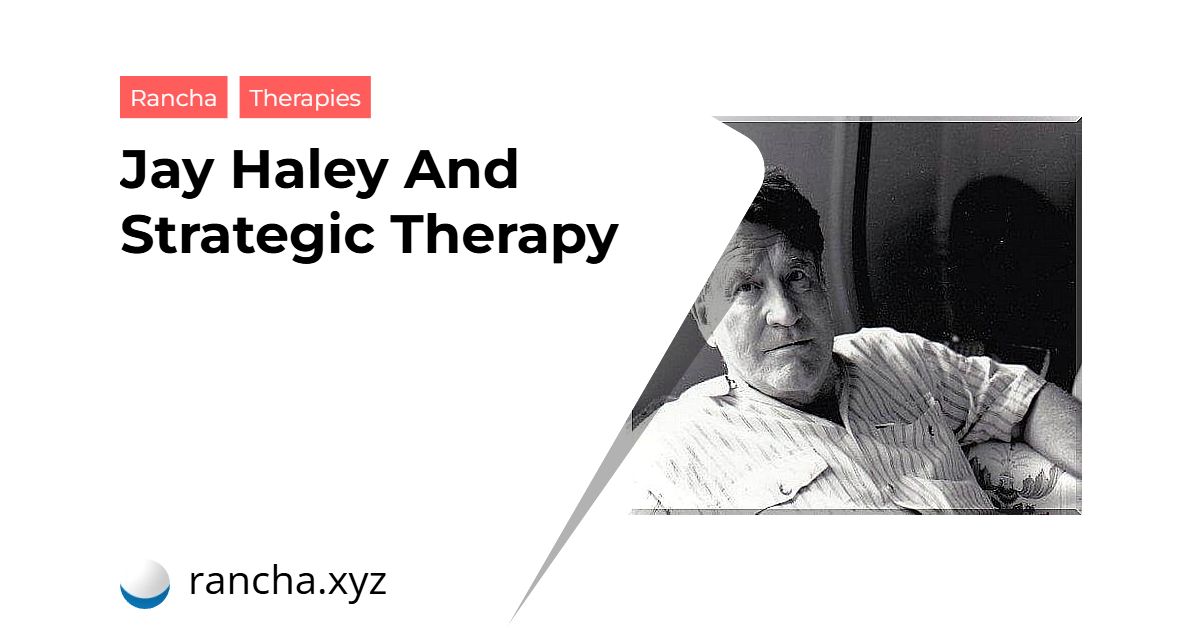In Jay Haley’s strategic therapy the therapist has a great deal of initiative and needs to identify a number of fundamental aspects. It moves from identifying solvable problems to planning interventions, setting goals, providing feedback and evaluating.
Jay Haley intended to go beyond what the moment might dictate and not focus on symptoms, mental states, or moods. What he really proposed was to work in social situations and not focus on individual work.
The Assumptions of Jay Haley’s Strategic Therapy
Jay Haley intended to offer the view that the problem of the client who goes to the consultation does not reside only in him, as human beings are social and, therefore, our entire environment is involved.
Therefore, the client is not the intervention unit, it is also necessary to intervene in the nuclear family, other family members and/or the peer group. Within its proposal, it also includes professionals who are in contact with the problem in one way or another.
Within the family, Haley analyzed the hierarchies that are established, as well as the rules and status or power roles within the family. There are roles and rules that are more primary than others, and analyzing them helps to better understand the client’s life.
Sometimes, the complaint, the inappropriate behavior or the reason for the consultation arise from confusion or imbalances in the hierarchy that disturb the adaptation to the family life cycle. If, for example, in a family the daughter is in charge of trying to mediate her parents’ conflicts, there will be a great imbalance that does not fit the adaptive role that corresponds to her as a daughter.

The history of the strategic-communication model
Anthropologist Gregory Bateson was the first great systems theorist, and his focus was on human relationships. For this, he applied some theoretical paradigms, such as General Systems Theory (TGS) and Cybernetics.
Following Bateson’s work, the Mental Research Institute (MRI) was created in Palo Alto, California. Through it came important theorists who fit the systemic approach: John Weakland, Don D. Jackson, Virginia Satir, Jay Haley or Paul Watzlawick.
The early works of authors such as John Weakland and Jay Haley were heavily influenced by the ideas of Erickson, a highly successful American psychiatrist from the mid-20th century. The history of family therapy was initially known as Strategic Therapy, the model of which had been developed by Haley, but because the Mental Research Institute (MRI) postulates and the model developed by Haley were very similar, they are often presented together.
Jay Haley’s view of the person
Systemics like Jay Haley understand people’s behavior within its interactional context, which is more relevant – with greater explanatory power – than any other personality variable . General systems theory and human communication theory are the initial models for understanding and analyzing the functioning of human groups and how interaction is primarily communicational.
On the one hand, a system is formed by a series of elements and rules that determine their relationships. On the other hand, these relationships can be observed in a circular way, in the phenomenon of the interactional pattern, where A produces B and B maintains A.
Complementarity between MRI and Jay Haley’s Strategic Therapy
What differentiates systemic models from other models created from other theoretical frameworks is that they understand incompatible behaviors as the product of an interaction, and not just as a result of personality variables.
At the Institute for Mental Research (MRI), they understand that problems arise because people automate poorly adapted interactive sequences that repeat themselves. Strategic therapy notes that problems arise when there is a particular distribution of power within the family system.

Another difference between strategic therapy and MRI is that the latter understands that the tried-and-true solutions that don’t work are the ones that keep the problem. Therefore, the problems are, in part, the result of unsuccessful attempts at resolution.
However, Jay Haley, with his strategic therapy, understands that symptoms play a role, even if they are not adaptive. That’s why symptoms can be understood as a dysfunctional way of communicating something.
In short, it is about considering that we live in a social context and, therefore, we influence and are influenced by it. Focusing on psychological therapy excluding its social environment is like trying to study an animal without knowing the environment in which it is embedded.
 rancha.xyz Be free to choose their own route to self-knowledge, health and balance of body and soul.
rancha.xyz Be free to choose their own route to self-knowledge, health and balance of body and soul.




